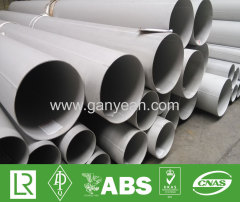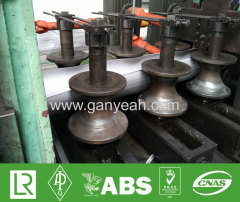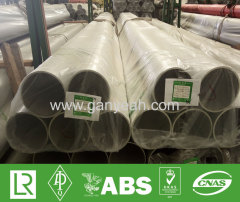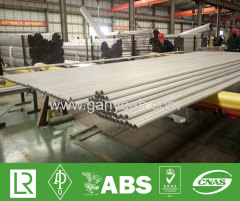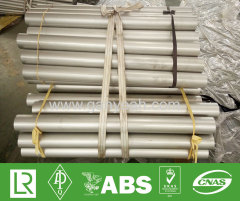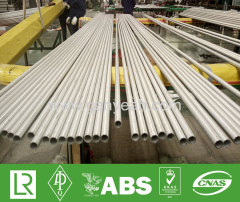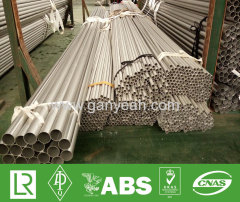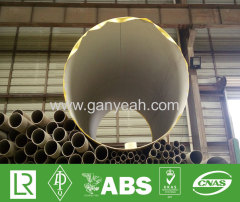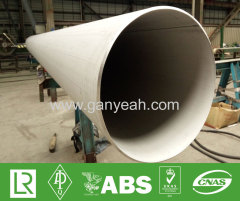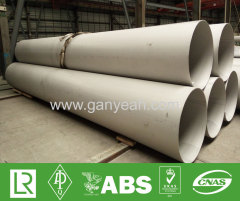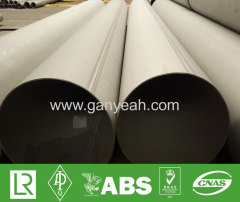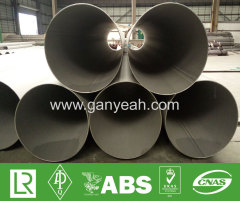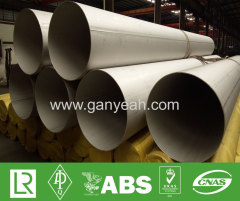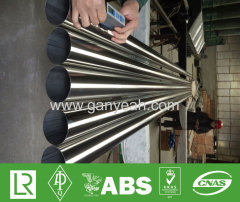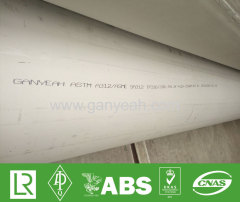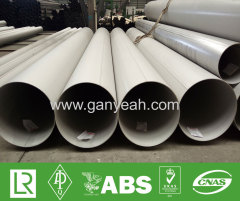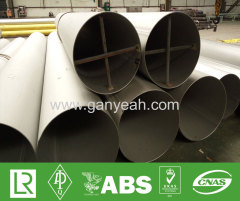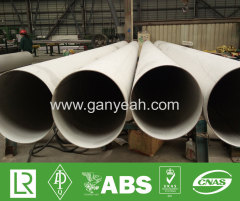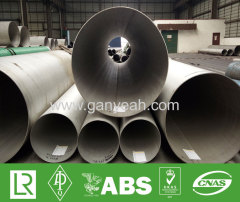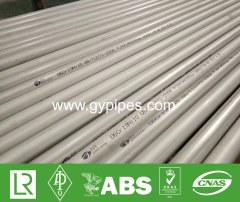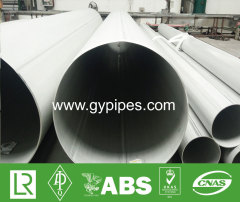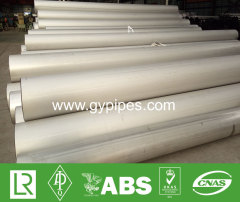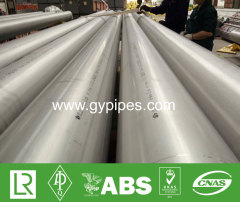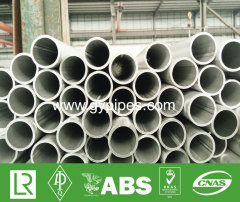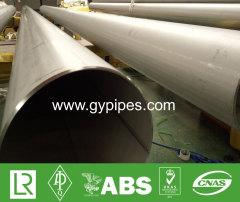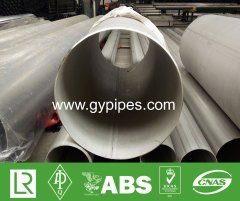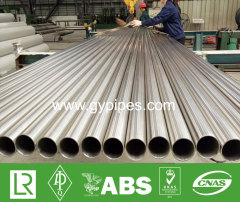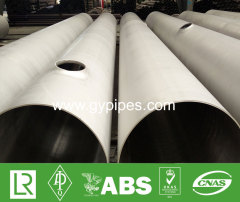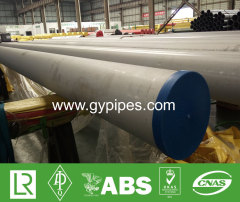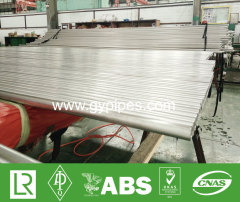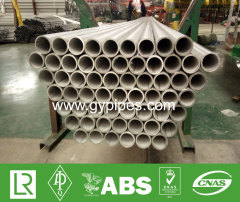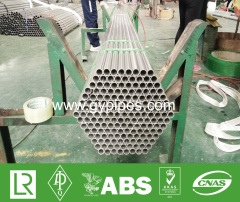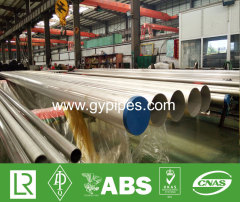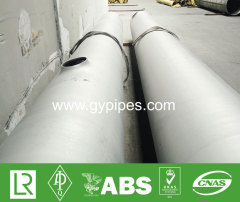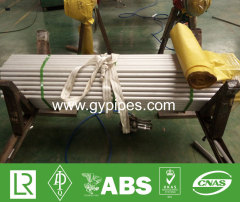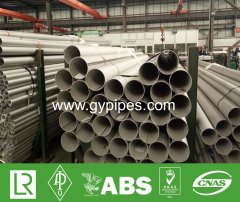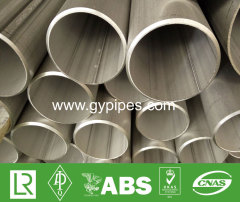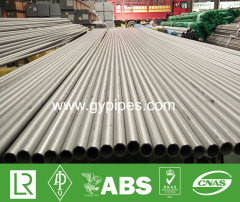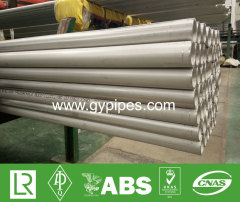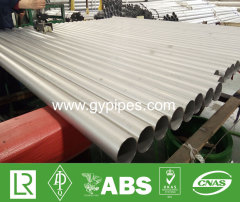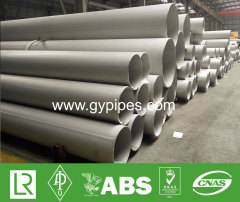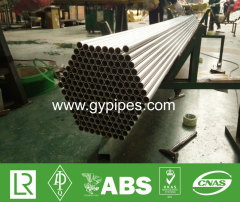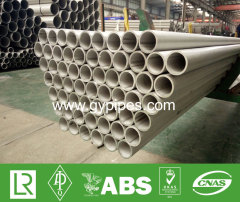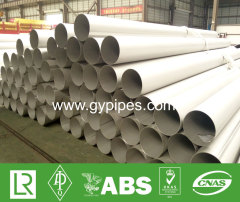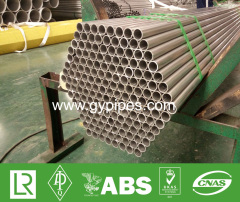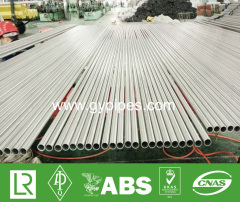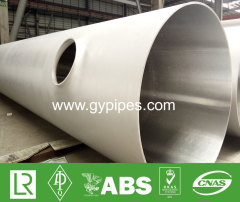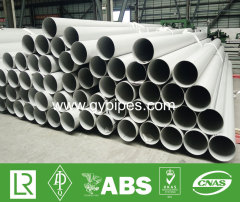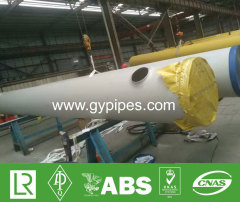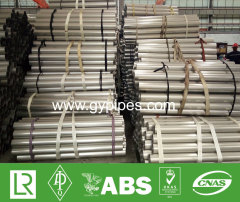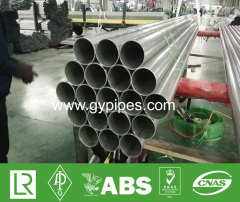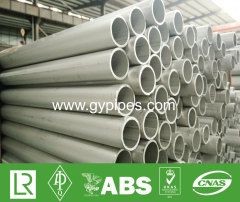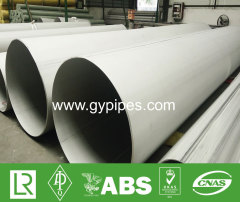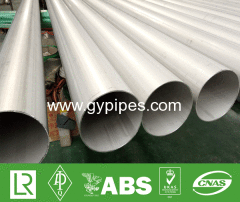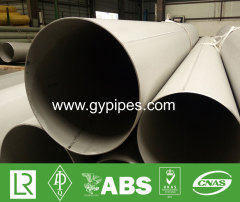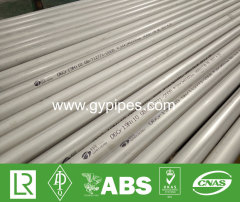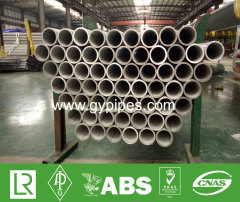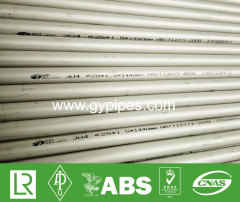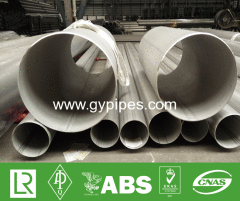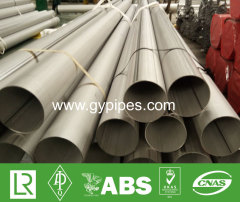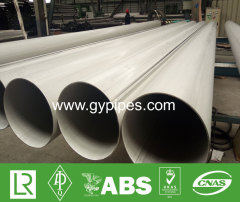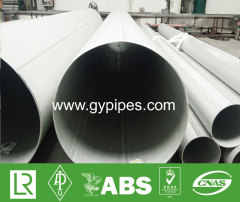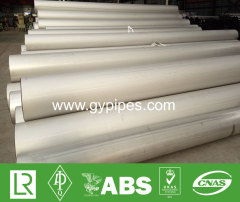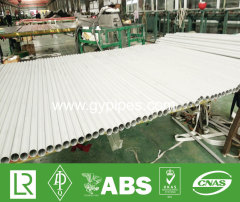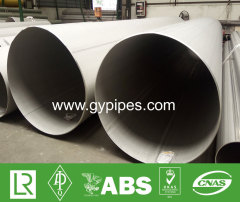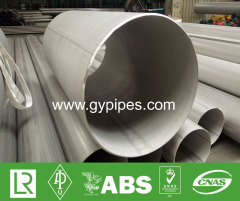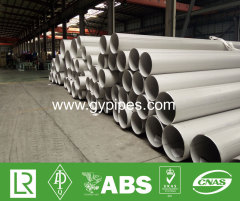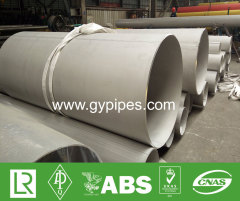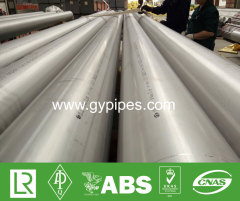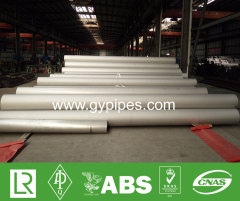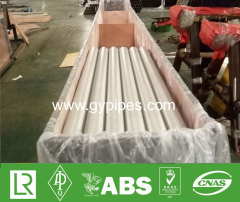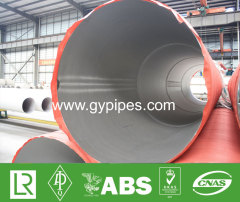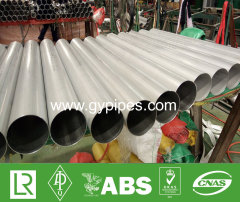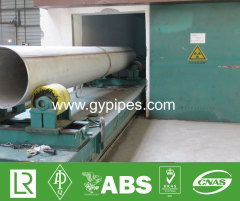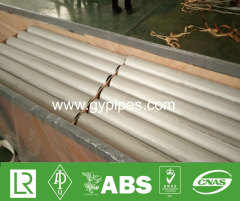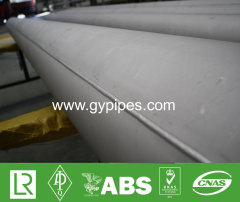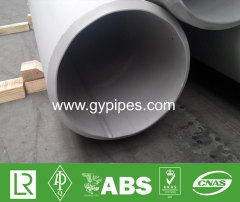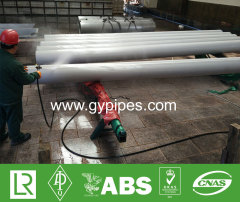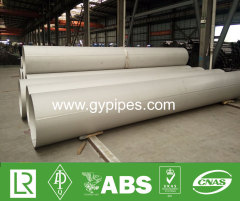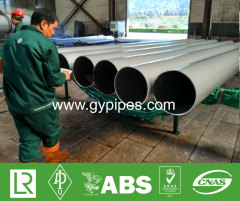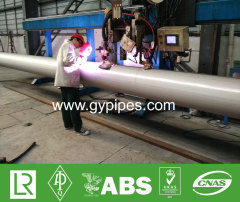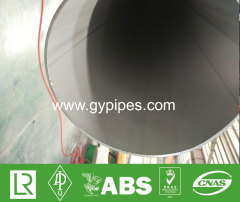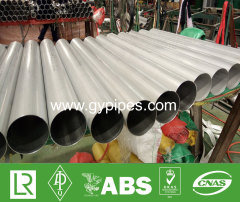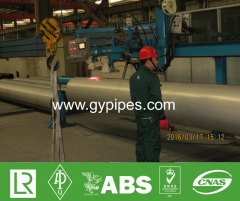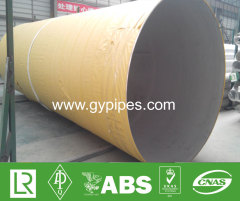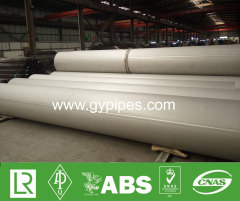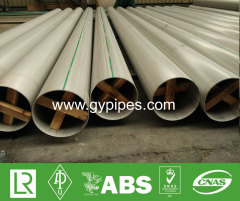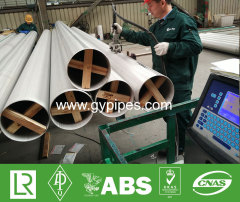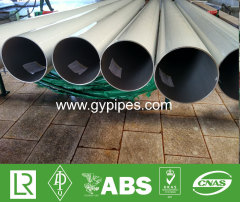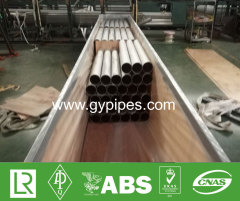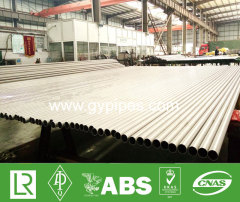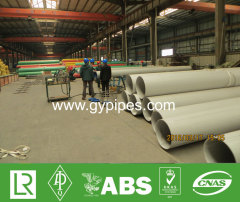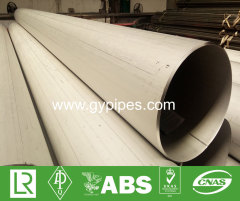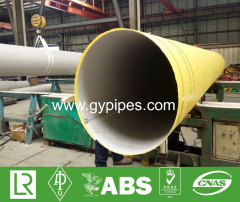Super Duplex Heavy Wall Stainless Steel Pipe
| Price: | 4800.0 USD |
| Payment Terms: | T/T,L/C,D/P |
| Place of Origin: | Zhejiang, China (Mainland) |
|
|
|
| Add to My Favorites | |
| HiSupplier Escrow |
Product Detail
Duplex 2205 is used in environments where resistance to general corrosion and chloride stress corrosion cracking is important.
Duplex Heavy Wall Stainless Steel Pipe
How the Austenite/Ferrite Balance is Achieved
To understand how Duplex Heavy Wall Stainless Steel Pipe work, first compare the composition of two familiar steels austenitic 304 (1.4301) and ferritic 430 (1.4016).
| Structure | Grade | EN Number | C | Si | Mn | P | S | N | Cr | Ni | Mo |
| Ferritic | 430 | 1.4016 | 0.08 | 1.00 | 1.00 | 0.040 | 0.015 | - | 16.0/18.0 | - | - |
| Austenitic | 304 | 1.4301 | 0.07 | 1.00 | 2.00 | 0.045 | 0.015 | 0.11 | 17.5/19.5 | 8.0/10.5 | - |
The important elements in stainless steels can be classified into ferritisers and austenitisers. Each element favours one structure or the other:
Ferritisers – Cr (chromium), Si (silicon), Mo (molybdenum), W (tungsten), Ti (titanium), Nb (niobium)
Austenitisers – C (carbon), Ni (nickel), Mn (manganese), N (nitrogen), Cu (copper)
Grade 430 has a predominance of ferritisers and so is ferritic in structure. Grade 304 becomes austenitic mainly through the use of about 8% nickel. To arrive at a duplex structure with about 50% of each phase, there has to be a balance between the austenitisers and the ferritisers. This explains why the nickel content of duplex steels is generally lower than for austenitics.
Here are some typical compositions of duplex stainless steels:
| Grade | EN No/UNS | Type | Approx Composition | ||||||
| Cr | Ni | Mo | N | Mn | W | Cu | |||
| 2101 LDX | 1.4162/ S32101 | Lean | 21.5 | 1.5 | 0.3 | 0.22 | 5 | - | - |
| DX2202 | 1.4062/ S32202 | Lean | 23 | 2.5 | 0.3 | 0.2 | 1.5 | - | - |
| RDN 903 | 1.4482/ S32001 | Lean | 20 | 1.8 | 0.2 | 0.11 | 4.2 | - | - |
| 2304 | 1.4362/ | Lean | 23 | 4.8 | 0.3 | 0.10 | - | - | - |
| 2205 | 1.4462/ S31803/ S32205 | Standard | 22 | 5.7 | 3.1 | 0.17 | - | - | - |
| 2507 | 1.4410/ S32750 | Super | 25 | 7 | 4 | 0.27 | - | - | - |
| Zeron 100 | 1.4501/ S32760 | Super | 25 | 7 | 3.2 | 0.25 | - | 0.7 | 0.7 |
| Ferrinox 255/ Uranus 2507Cu | 1.4507/ S32520/ S32550 | Super | 25 | 6.5 | 3.5 | 0.25 | - | - | 1.5 |
In some of the recently developed grades, nitrogen and manganese are used together to bring the nickel content to very low levels. This has a beneficial effect on price stability.
At present, we are still very much in the development phase of duplex steels. Therefore, each mill is promoting its own particular brand. It is generally agreed that there are too many grades. However, this is likely to continue until the "winners" emerge.
Corrosion Resistance of Duplex Steels
The range of duplex steels allows them to be matched for corrosion resistance with the austenitic and ferritic steel grades. There is no single measure of corrosion resistance. However, it is convenient to use the Pitting Resistance Equivalent Number (PREN) as a means of ranking the grades.
PREN = %Cr + 3.3 x %Mo + 16 x %N
The following table shows how the duplex steels compare with some austenitic and ferritic grades.
| Grade | EN No/UNS | Type | Typical PREN |
| 430 | 1.4016/ S43000 | Ferritic | 18 |
| 304 | 1.4301/ S30400 | Austenitic | 19 |
| 441 | 1.4509/ S43932 | Ferritic | 19 |
| RDN 903 | 1.4482/ S32001 | Duplex | 22 |
| 316 | 1.4401/ S31600 | Austenitic | 24 |
| 444 | 1.4521/ S44400 | Ferritic | 24 |
| 316L 2.5 Mo | 1.4435 | Austenitic | 26 |
| 2101 LDX | 1.4162/ S32101 | Duplex | 26 |
| 2304 | 1.4362/ S32304 | Duplex | 26 |
| DX2202 | 1.4062/ S32202 | Duplex | 27 |
| 904L | 1.4539/ N08904 | Austenitic | 34 |
| 2205 | 1.4462/ S31803/ S32205 | Duplex | 35 |
| Zeron 100 | 1.4501/ S32760 | Duplex | 41 |
| Ferrinox 255/ Uranus 2507Cu | 1.4507/ S32520/ S32550 | Duplex | 41 |
| 2507 | 1.4410/ S32750 | Duplex | 43 |
| 6% Mo | 1.4547/ S31254 | Austenitic | 44 |
It must be emphasised that this table is only a guide to material selection. It is always important to assess the suitability of a particular with a full knowledge of the corrosive environment.
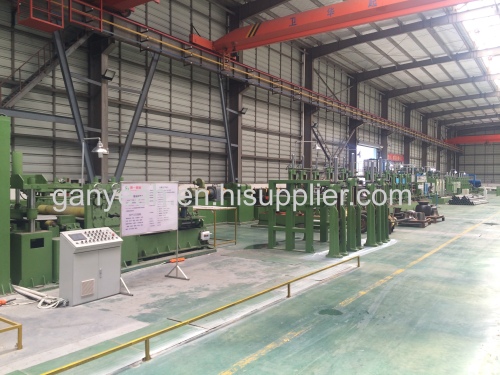
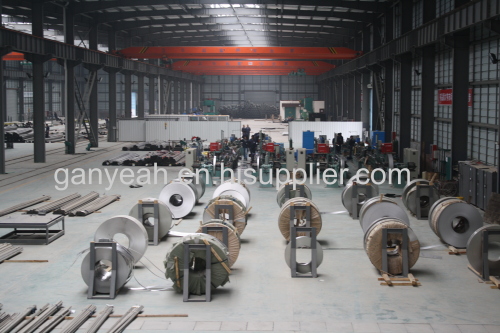
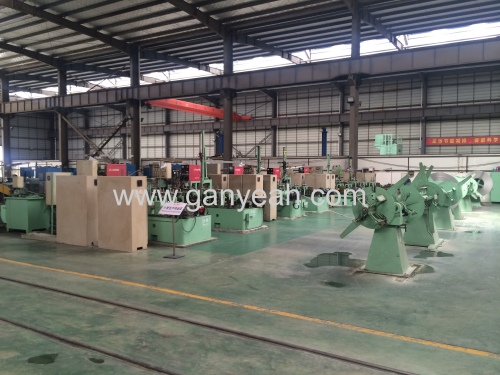
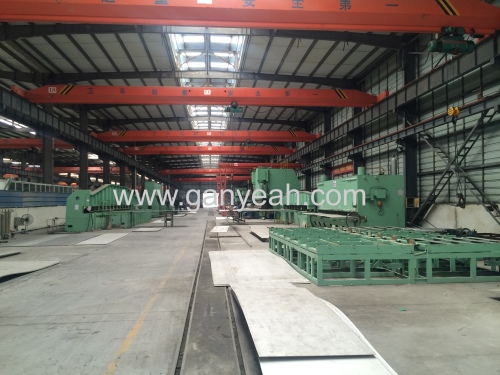
Related Search
Find more related products in following catalogs on Hisupplier.com












